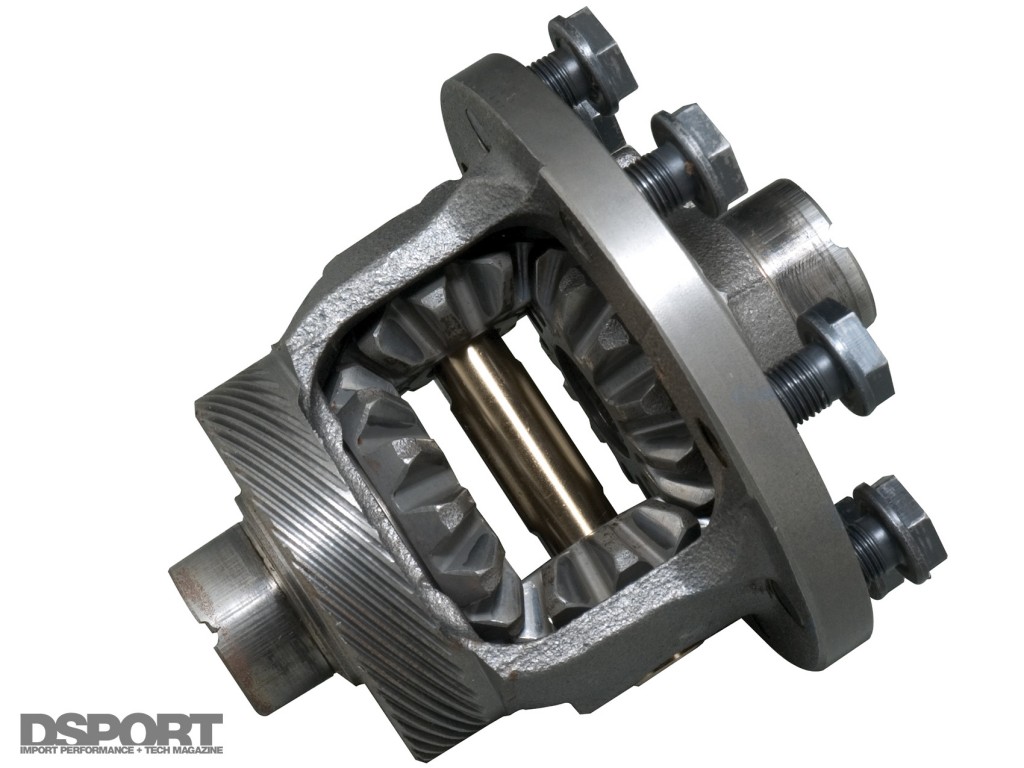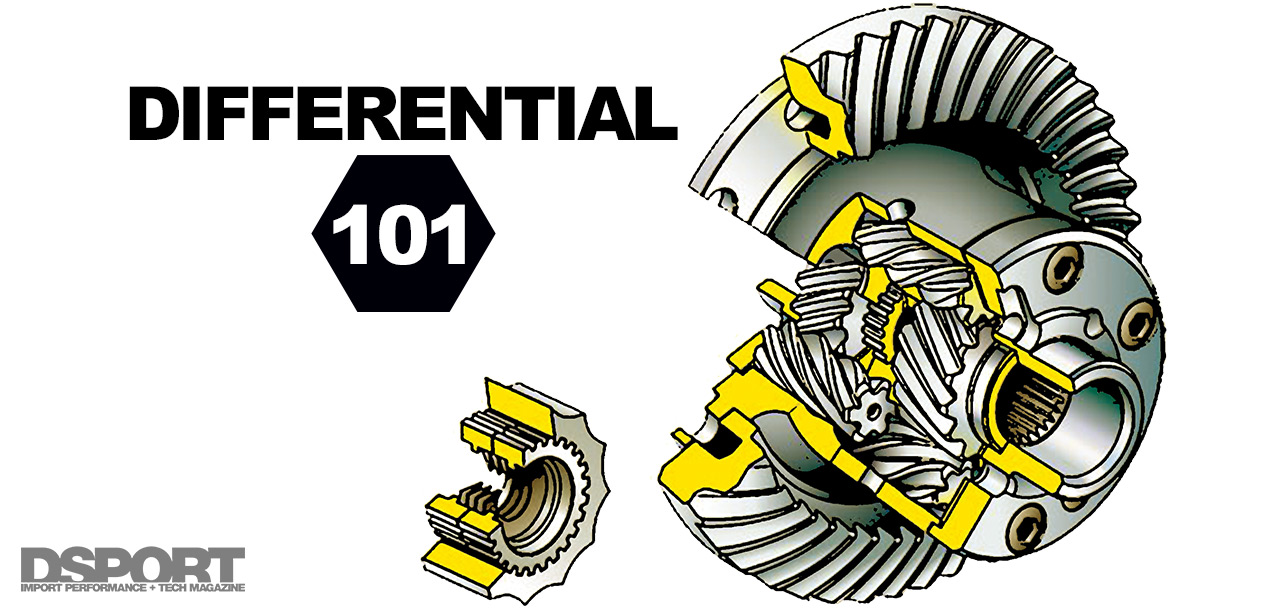Many people assume that at least two wheels receive power from the drivetrain. Their logic assumes both front wheels pull a front-wheel-drive vehicle or both rear wheels push a rear-wheel-drive vehicle. In about 95 percent of all vehicles, this is an incorrect assumption. In actuality, almost all vehicles on the road use an “open” differential; a mechanism that dates back to the third century in China. As a result, there are situations where the open differential only directs power to a single wheel. Having all of the power directed to a single wheel can obviously limit the full potential of a vehicle. By understanding the purpose that a differential serves, we will explore the function of open differentials, limited-slip differentials and the spool.
Text by Michael Ferrara // Photos by DSPORT Staff
DSPORT Issue #148
Rotational Speed of Your Wheels
When a vehicle is going in a straight line, all wheels are traveling at the same rotational speed. This, of course, assumes that you have the same size tires on the left and right sides of the vehicle and that both the front and rear tires are of the same height. If different size tires are being run from the front to the rear, the rotational speed of the front wheels will not match the rotational speed of the rear tires. However, as long as the tires match from the left to the right side of the vehicle, both front tires will share the same rotational speed while both rear tires will share the same rotational speed. While traveling in a straight-line doesn’t require a differential, the need for a differential becomes apparent when you begin to understand the dynamics that occur when a vehicle makes a turn.
During a turn, the outside wheel must travel at a higher rotational speed than the inside wheel. If that sounds weird, consider this situation for clarification. If a vehicle makes a 90-degree turn on a radius of 25-feet to the inside tire, the outside tire travels on a radius of 25-feet plus the track width of the vehicle (distance between the center points of the two tires). For this example, let’s say that the track width is 60 inches or 5 feet. This would mean that the outside tire must travel on a radius of 25 plus 5 feet or 30 feet. In this example the total distance traveled during this turn by the tires would be:
Inside tire: (25 feet x 2 x π) / 4 = 39.25 feet
Outside tire: (30 feet x 2 x π) / 4 = 47.10 feet
To solve this equation we use the formula that the circumference of a circle is equal to pi times the diameter (where the diameter equals the radius times two). We also know that there are 360 degrees in a full circle and that 90 degrees, the angle of our turn, only accounts for a quarter of the entire circumference of the circle. This is why we divide our circumference product by four in this example to establish the distance traveled by each wheel.
As this example illustrates, the outside tire must travel an additional 7.85 feet in the same turn. Since speed is defined as the distance traveled per unit of time, the only way that the outside tire can travel more distance in the same amount of time is by having a higher speed. In this example, the speed of the outside tire must be 20 percent higher than the rotational speed of the inside tire. If you plug a few different numbers in the above equations, you’ll find that the difference in speed between the inside and outside wheels increases with tighter radius turns or increases in track width. Hence the need for a mechanical device that allows one wheel to spin at a different rate than the other is apparent for vehicles that make turns.
The “Open” Differential
As the name implies, the differential is the mechanical device that allows the inside and outside wheel to rotate at different speeds in a turn. An “open” differential is the simplest type of differential utilized by vehicle manufacturers. In an open differential, the axles go into the side gears contained within the carrier. These side gears (a.k.a. sun gears) mate to spider gears (a.k.a. planet gears) mounted on a cross- shaft or planet trunion. While you don’t need to know all the parts, you do need to understand the function. The open differential allows the inside and outside wheels to turn at different speeds. This difference in speed occurs in the center of the carrier between the side and spider gears. On a positive note, an open differential allows for a difference in the outside and inside wheel speeds. The downside to an open differential is that when the pedal meets the metal, power gets distributed to the wheel with the least amount of traction.
During straight-line acceleration, an open differential will put the power to the wheel with less traction. As a result, a “peg-leg” type burnout is generally the outcome. This diminishes straight-line performance and the result is slower 60-foot, 0-to-60 MPH or quarter-mile elapsed times. During aggressive cornering under power, an open differential will tend to spin the inside tire (the tire that has less traction since the turn has caused the body and weight to transfer to the outside wheel). This diminishes the ability of a vehicle to traverse a road course or curve with ultimate speed. As you might imagine, there is a significant advantage to having both wheels pushing or pulling a vehicle.
 This cutaway of an open differential shows the side and spider gears which allow inside and outside wheels to spin at different speeds.
This cutaway of an open differential shows the side and spider gears which allow inside and outside wheels to spin at different speeds.



